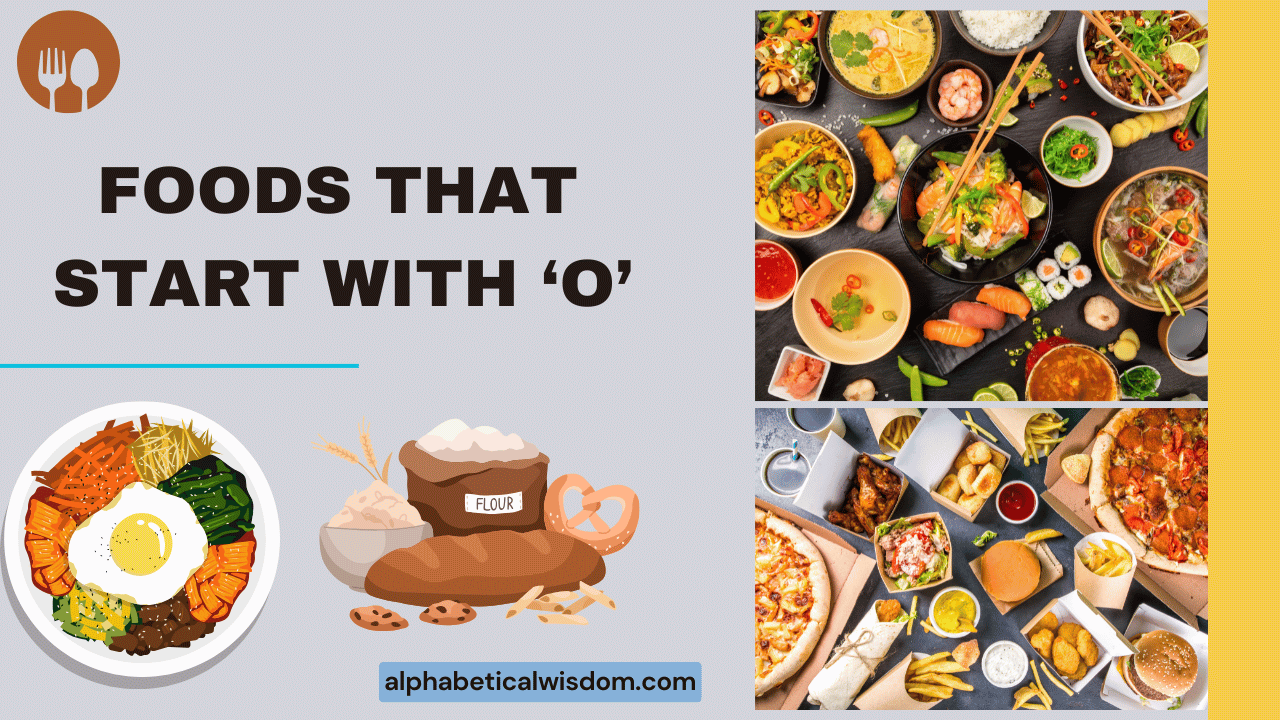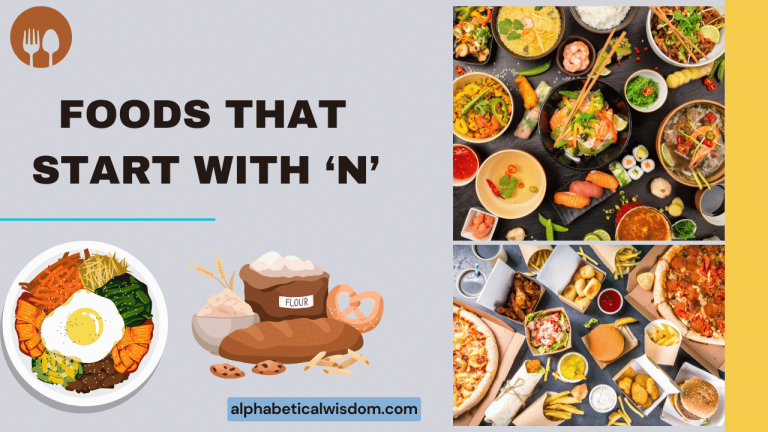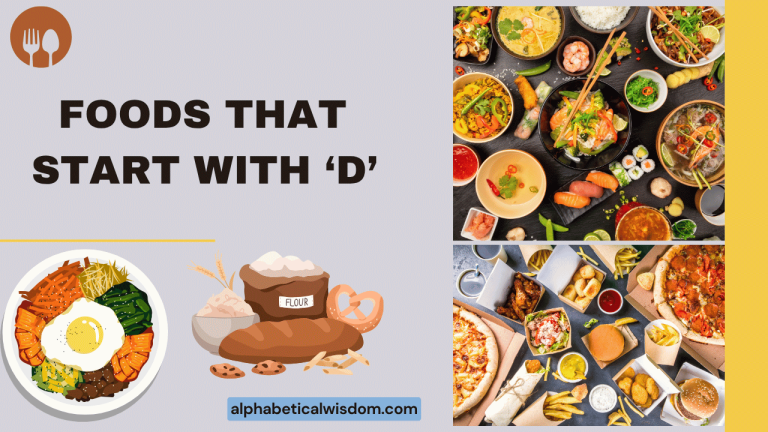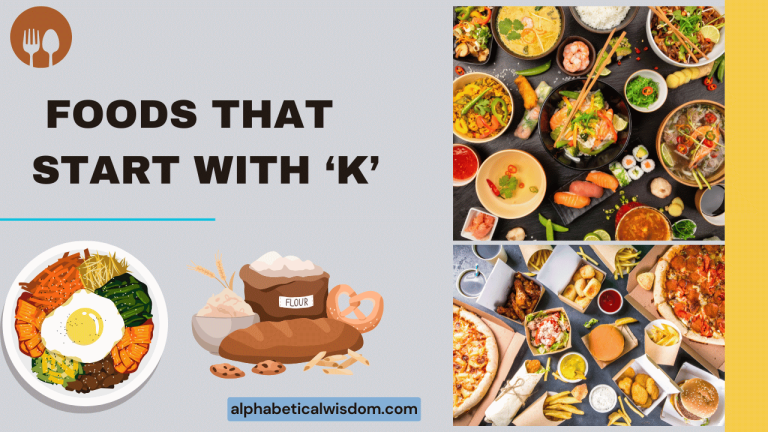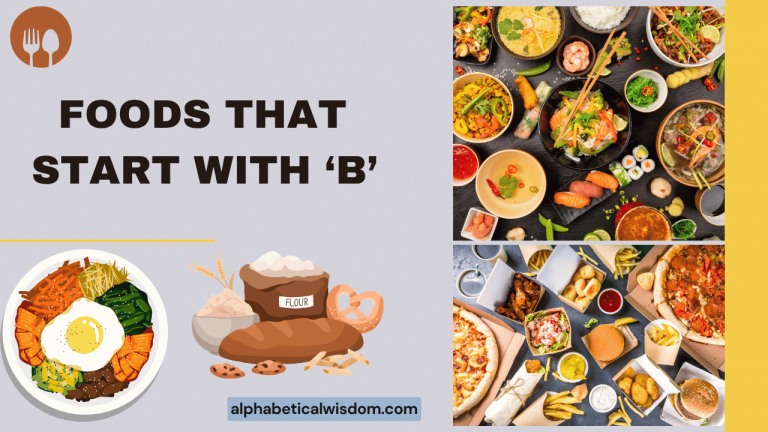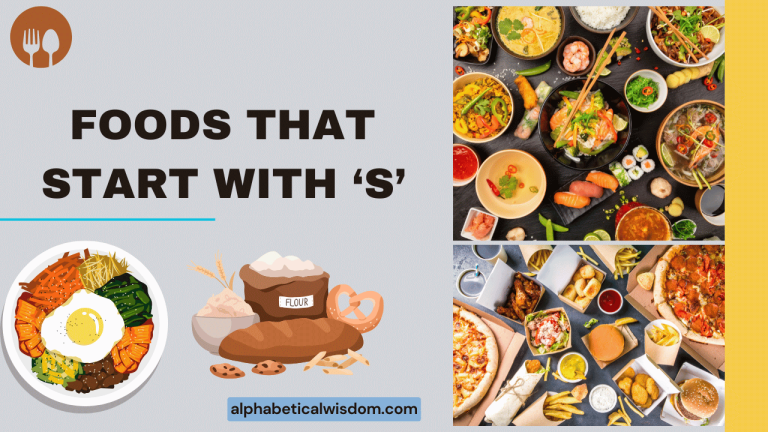Foods That Start With O: A Grammatical Exploration
Exploring foods that begin with the letter “O” offers a fascinating intersection of vocabulary, grammar, and cultural knowledge. This article delves into the various nouns that represent these foods, examining their countability, singular and plural forms, and usage in different sentence structures.
Understanding these elements is crucial for clear and effective communication in English. Whether you’re an English language learner, a culinary enthusiast, or simply curious about expanding your vocabulary, this guide provides a comprehensive look at “O” foods and their grammatical properties.
This article will benefit anyone looking to improve their English vocabulary and grammar skills, particularly those interested in the culinary arts or food-related discussions.
Table of Contents
- Introduction
- Definition: Nouns for Foods Starting with ‘O’
- Structural Breakdown of Food Nouns
- Types and Categories of Foods Starting with ‘O’
- Examples of Foods Starting with ‘O’ in Sentences
- Usage Rules for Food Nouns
- Common Mistakes with Food Nouns
- Practice Exercises
- Advanced Topics: Idioms and Figurative Language
- Frequently Asked Questions
- Conclusion
Definition: Nouns for Foods Starting with ‘O’
Nouns representing foods starting with the letter “O” are words that name edible substances or dishes whose names begin with the letter “O”. These nouns can refer to individual items, ingredients, or prepared meals.
They function grammatically as nouns, which means they can act as subjects, objects, complements, or appositives within a sentence. Understanding the grammatical properties of these nouns, such as whether they are countable or uncountable, is crucial for correct usage.
For example, “orange” is a countable noun, while “oil” is generally uncountable. The context in which these nouns are used can also influence their grammatical behavior.
These nouns cover a wide range of culinary items, from fruits and vegetables to complex dishes and ingredients.
Structural Breakdown of Food Nouns
The structural breakdown of food nouns involves understanding their grammatical properties and how they fit into sentence structures. These nouns can be categorized based on their countability. Countable nouns, like “olive,” can be counted and have singular and plural forms (“olive,” “olives”). Uncountable nouns, such as “oatmeal,” generally cannot be counted and do not typically have a plural form. The use of articles (a, an, the) also depends on the countability of the noun and the specificity of the reference. For example, “I ate an orange” uses the indefinite article because it refers to any orange, while “The orange on the table is mine” uses the definite article because it refers to a specific orange. Additionally, prepositions often accompany food nouns to indicate relationships such as origin, ingredients, or preparation methods (e.g., “oil from olives,” “omelet with cheese”). The structure of sentences involving these nouns follows standard English grammar rules, with the noun functioning as a subject, object, or complement.
Types and Categories of Foods Starting with ‘O’
Foods starting with the letter “O” can be categorized into several groups based on their nature and origin. These categories include fruits, vegetables, dishes, seafood, and oils and sauces.
Each category has its unique characteristics and grammatical considerations.
Fruits
Fruits are sweet, fleshy products of trees and plants that contain seeds. Examples include oranges, olives (often treated as a fruit in culinary contexts), and occasionally other less common fruits.
These nouns are typically countable.
Vegetables
Vegetables are edible plants or parts of plants used for food. While fewer vegetables start with “O,” some varieties of onions might be considered.
These are generally countable.
Dishes
Dishes are prepared meals or specific recipes. Examples include omelets, orzo pasta dishes, and other culinary creations.
These can be countable or uncountable depending on the dish.
Seafood
Seafood includes edible marine animals. Examples might include oysters, although this is a less common starting letter for seafood.
These nouns are usually countable.
Oils and Sauces
Oils and sauces are liquid or semi-liquid substances used in cooking. Olive oil is a prime example.
These nouns are typically uncountable.
Examples of Foods Starting with ‘O’ in Sentences
The following tables provide examples of how foods starting with “O” are used in sentences. These examples are categorized to illustrate the different types of foods and their grammatical functions.
Table 1: Examples using “Orange”
The following table provides 30 examples of how the word “Orange” is used in sentences, demonstrating various grammatical contexts.
| Sentence | Grammatical Function |
|---|---|
| I ate an orange for breakfast. | Direct Object |
| She peeled the orange carefully. | Direct Object |
| The juice from the orange was refreshing. | Object of Preposition |
| He prefers orange juice over apple juice. | Adjective |
| Oranges are a good source of vitamin C. | Subject |
| The orange tree is blooming. | Subject |
| She added orange zest to the cake. | Adjective |
| The color of the sunset was orange. | Predicate Adjective |
| He bought a bag of oranges. | Direct Object |
| The orange I ate was very sweet. | Subject |
| Can I have an orange, please? | Direct Object |
| These oranges are from Florida. | Subject |
| The orange peel is used for marmalade. | Subject |
| He squeezed the orange to make juice. | Direct Object |
| She likes orange flavored candies. | Adjective |
| The orange groves are beautiful in spring. | Subject |
| I need to buy more oranges at the store. | Direct Object |
| The aroma of orange filled the room. | Subject |
| He is allergic to oranges. | Object of Preposition |
| She decorated the cake with slices of orange. | Object of Preposition |
| The orange is my favorite fruit. | Subject |
| I prefer orange marmalade on my toast. | Direct Object |
| The orange tree in the garden is very old. | Subject |
| She made a refreshing drink with orange and lime. | Object of Preposition |
| The orange juice tasted fresh. | Subject |
| He mixed the salad with orange segments. | Object of Preposition |
| The orange color of the building stood out. | Adjective |
| She used orange blossom to make tea. | Adjective |
| The orange was very juicy. | Subject |
| I love the taste of orange in desserts. | Object of Preposition |
Table 2: Examples using “Olive” and “Olive Oil”
This table provides 30 examples, showcasing the use of “Olive” and “Olive Oil” in various sentences, demonstrating their grammatical roles.
| Sentence | Grammatical Function |
|---|---|
| I added olives to the salad. | Direct Object |
| She prefers green olives over black olives. | Direct Object |
| The olive oil is from Italy. | Subject |
| He drizzled olive oil on the bread. | Direct Object |
| Olives are a popular snack. | Subject |
| The taste of olive is quite distinct. | Object of Preposition |
| She cooked the vegetables in olive oil. | Object of Preposition |
| The olive tree is very old. | Subject |
| He bought a jar of olives. | Direct Object |
| The olive oil I use is extra virgin. | Subject |
| Can I have some olives with my drink? | Object of Preposition |
| These olives are very salty. | Subject |
| The olive branch is a symbol of peace. | Subject |
| He marinated the chicken in olive oil and herbs. | Object of Preposition |
| She likes olive tapenade on crackers. | Direct Object |
| The olive groves are beautiful. | Subject |
| I need to buy more olive oil. | Direct Object |
| The aroma of olive oil filled the kitchen. | Subject |
| He is allergic to olives. | Object of Preposition |
| She prepared the salad with olives and feta cheese. | Object of Preposition |
| The olive is a staple in Mediterranean cuisine. | Subject |
| I prefer cooking with olive oil. | Object of Preposition |
| The olive tree provides shade in the garden. | Subject |
| She made a dressing with olive oil and vinegar. | Object of Preposition |
| The olive oil tasted peppery. | Subject |
| He seasoned the pasta with olive oil and garlic. | Object of Preposition |
| The olive color of the jar was appealing. | Adjective |
| She used olive leaves for decoration. | Adjective |
| The olive was cured perfectly. | Subject |
| I enjoy the flavor of olive oil in salads. | Object of Preposition |
Table 3: Examples using “Omelet”
This table provides 20 examples of how the word “Omelet” is used in sentences, illustrating different grammatical functions and sentence structures.
| Sentence | Grammatical Function |
|---|---|
| I ordered an omelet for breakfast. | Direct Object |
| She made a cheese omelet. | Direct Object |
| The omelet was cooked perfectly. | Subject |
| He added vegetables to his omelet. | Object of Preposition |
| Omelets are a quick and easy meal. | Subject |
| The best part of the breakfast was the omelet. | Predicate Nominative |
| She prepared an omelet with mushrooms and onions. | Direct Object |
| The fluffy omelet was delicious. | Subject |
| He ate the entire omelet in one sitting. | Direct Object |
| The omelet I had was very filling. | Subject |
| Can I have an omelet with ham and cheese? | Direct Object |
| These omelets are freshly made. | Subject |
| The omelet recipe is very simple. | Subject |
| He seasoned the omelet with salt and pepper. | Direct Object |
| She likes her omelet with spinach. | Direct Object |
| The omelet bar had a variety of toppings. | Subject |
| I need to learn how to make a good omelet. | Direct Object |
| The aroma of the omelet filled the kitchen. | Subject |
| He is known for his amazing omelets. | Object of Preposition |
| She topped the omelet with salsa. | Object of Preposition |
Usage Rules for Food Nouns
Understanding the usage rules for food nouns is essential for grammatical accuracy. These rules govern countability, singular and plural forms, article usage, and prepositional phrases.
Countable vs. Uncountable Nouns
Countable nouns can be counted and have singular and plural forms. Examples include “orange” (one orange, two oranges) and “olive” (one olive, several olives). Uncountable nouns, also known as mass nouns, cannot be counted and typically do not have a plural form. Examples include “oatmeal” and “olive oil.” However, uncountable nouns can sometimes be used with expressions of quantity (e.g., “a bowl of oatmeal,” “a liter of olive oil”). When referring to different types or varieties of an uncountable noun, it can sometimes take a plural form (e.g., “different olive oils”).
Singular and Plural Forms
For countable nouns, the singular form refers to one item, while the plural form refers to multiple items. Plural forms are usually created by adding “-s” or “-es” to the singular form (e.g., “orange,” “oranges”; “olive,” “olives”).
Irregular plural forms are less common with food nouns starting with “O,” but it’s important to be aware of them in general English grammar. The plural form is used when referring to more than one of the item.
Using Articles with Food Nouns (a, an, the)
The use of articles (a, an, the) depends on the countability of the noun and the specificity of the reference. Use “a” or “an” with singular, countable nouns when referring to a non-specific item (e.g., “I want an orange”). Use “the” when referring to a specific item or one that has already been mentioned (e.g., “The orange on the table is mine”). Uncountable nouns generally do not take “a” or “an” (e.g., “I need olive oil”). However, “the” can be used with uncountable nouns when referring to a specific instance (e.g., “The olive oil I bought yesterday was excellent”).
Using Prepositions with Food Nouns
Prepositions are used to show the relationship between a food noun and other words in the sentence. Common prepositions used with food nouns include “with,” “from,” “in,” “of,” and “on.” For example, “omelet with cheese” indicates an ingredient, “oil from olives” indicates the source, “cooked in olive oil” indicates the cooking method, “a bowl of oatmeal” indicates quantity, and “olives on the pizza” indicates placement. The choice of preposition depends on the specific relationship you want to express.
Common Mistakes with Food Nouns
Several common mistakes occur when using food nouns. These often involve incorrect countability, article usage, and prepositional phrases.
Understanding these mistakes can help improve accuracy.
Mistake 1: Incorrect Countability
- Incorrect: I need to buy two olive oil.
- Correct: I need to buy two bottles of olive oil.
Mistake 2: Misusing Articles
- Incorrect: I ate the orange. (when referring to any orange)
- Correct: I ate an orange.
Mistake 3: Incorrect Pluralization
- Incorrect: Can I have some oatmeals?
- Correct: Can I have some oatmeal?
Mistake 4: Wrong Preposition
- Incorrect: Omelet of cheese.
- Correct: Omelet with cheese.
Practice Exercises
Test your knowledge with these practice exercises. Fill in the blanks with the correct form of the food noun or article.
Exercise 1: Countable vs. Uncountable
Choose the correct form of the noun.
| Question | Answer |
|---|---|
| 1. I would like to order an __________. (omelet/omelets) | omelet |
| 2. She added __________ to the salad. (olive/olives) | olives |
| 3. We need to buy more __________. (orange/oranges) | oranges |
| 4. He used __________ to cook the vegetables. (olive oil/olive oils) | olive oil |
| 5. I enjoy eating __________ for breakfast. (oatmeal/oatmeals) | oatmeal |
| 6. She prefers green __________ over black ones. (olive/olives) | olives |
| 7. __________ are a good source of Vitamin C. (Orange/Oranges) | Oranges |
| 8. He drizzled __________ over the bread (olive oil/olive oils) | olive oil |
| 9. I made an __________ with cheese and mushrooms (omelet/omelets) | omelet |
| 10. She likes to have __________ with her coffee (orange/oranges) | orange |
Exercise 2: Article Usage
Fill in the blanks with “a,” “an,” “the,” or leave blank if no article is needed.
| Question | Answer |
|---|---|
| 1. I want __________ orange. | an |
| 2. __________ olive oil from Italy is very good. | The |
| 3. She made __________ omelet with spinach. | an |
| 4. He likes __________ olives in his martini. | (no article) |
| 5. __________ oatmeal I had this morning was delicious. | The |
| 6. She peeled __________ orange for her snack. | an |
| 7. __________ olive tree in our yard is very old. | The |
| 8. I prefer __________ omelet with ham and cheese. | an |
| 9. She bought __________ bottle of olive oil. | a |
| 10. __________ oranges from Florida are the best. | (no article) |
Exercise 3: Prepositional Phrases
Choose the correct preposition.
| Question | Answer |
|---|---|
| 1. Omelet __________ cheese is my favorite. (with/of) | with |
| 2. The oil is made __________ olives. (from/with) | from |
| 3. I put olives __________ the pizza. (on/in) | on |
| 4. She cooked the vegetables __________ olive oil. (in/with) | in |
| 5. I had a bowl __________ oatmeal. (of/with) | of |
| 6. Cake decorated __________ orange slices. (with/of) | with |
| 7. Dressing made __________ olive oil and vinegar. (with/from) | with |
| 8. Salad __________ olives and feta cheese. (with/of) | with |
| 9. Dish cooked __________ olive oil. (in/with) | in |
| 10. Recipe __________ orange zest. (with/of) | with |
Advanced Topics: Idioms and Figurative Language
Beyond basic grammar, food nouns starting with “O” can appear in idioms and figurative language. Understanding these expressions adds depth to language comprehension and usage.
For example, the idiom “olive branch” symbolizes peace or reconciliation. Recognizing such figurative uses enhances one’s ability to interpret nuanced meanings in both written and spoken communication.
Another example is using “orange” to describe a vibrant color, extending its meaning beyond just the fruit. Advanced learners should pay attention to these idiomatic expressions to improve their overall language proficiency.
Frequently Asked Questions
Here are some frequently asked questions about using food nouns starting with “O”:
- Q: Is “oatmeal” countable or uncountable?
A: “Oatmeal” is generally uncountable. You would say “a bowl of oatmeal” or “some oatmeal” rather than “an oatmeal” or “oatmeals.”
- Q: When do I use “a” vs. “an” before “orange”?
A: You use “an” before “orange” because “orange” starts with a vowel sound (e.g., “an orange”). Use “a” before words that start with a consonant sound.
- Q: Can I say “olive oils” if I’m referring to different types?
A: Yes, you can use the plural form “olive oils” when referring to different types or varieties of olive oil (e.g., “We offer a selection of different olive oils”).
- Q: What is the difference between “with” and “of” when describing ingredients?
A: “With” is used to indicate an ingredient that is added to a dish (e.g., “omelet with cheese”). “Of” is often used to indicate a component or part of something (e.g., “a bowl of oatmeal”).
- Q: How do I use “the” with food nouns?
A: Use “the” when referring to a specific instance or item that has already been mentioned (e.g., “The orange I ate was very sweet”).
- Q: Are there any irregular plural forms for food nouns starting with “O”?
A: No, most food nouns starting with “O” form their plural regularly by adding “-s” or “-es.”
- Q: How can I improve my usage of articles with food nouns?
A: Practice identifying whether a noun is countable or uncountable and whether you are referring to a specific or non-specific item. Pay attention to how native speakers use articles in various contexts.
- Q: Can “olive” be used as an adjective?
A: Yes, “olive” can be used as an adjective to describe a color or flavor (e.g., “olive green,” “olive tapenade”).
- Q: Is it correct to say “an omelet” or “a omelet”?
A: It is correct to say “an omelet” because the word “omelet” starts with a vowel sound, even though the letter ‘o’ is sometimes pronounced as a consonant sound. The general rule is to use “an” before vowel sounds, not just vowels. However, some speakers may colloquially use “a omelet,” though “an omelet” is generally considered grammatically correct.
- Q: How do you properly quantify uncountable food nouns like olive oil?
A: Uncountable nouns like olive oil are quantified using specific units or containers. For instance, you would say “a bottle of olive oil,” “a liter of olive oil,” “a tablespoon of olive oil,” or “some olive oil.” These quantifying terms allow you to specify the amount of the uncountable noun you are referring to, making your statements more precise.
Conclusion
Mastering the grammar of food nouns starting with the letter “O” involves understanding their countability, singular and plural forms, article usage, and prepositional relationships. This knowledge is crucial for clear and accurate communication in English, especially in culinary contexts.
By paying attention to these grammatical details and practicing regularly, learners can significantly improve their language skills. Remember to focus on the context in which these nouns are used and to be aware of common mistakes.
Continued practice and exposure to the language will solidify your understanding and usage of these food nouns, ultimately enhancing your overall English proficiency.
